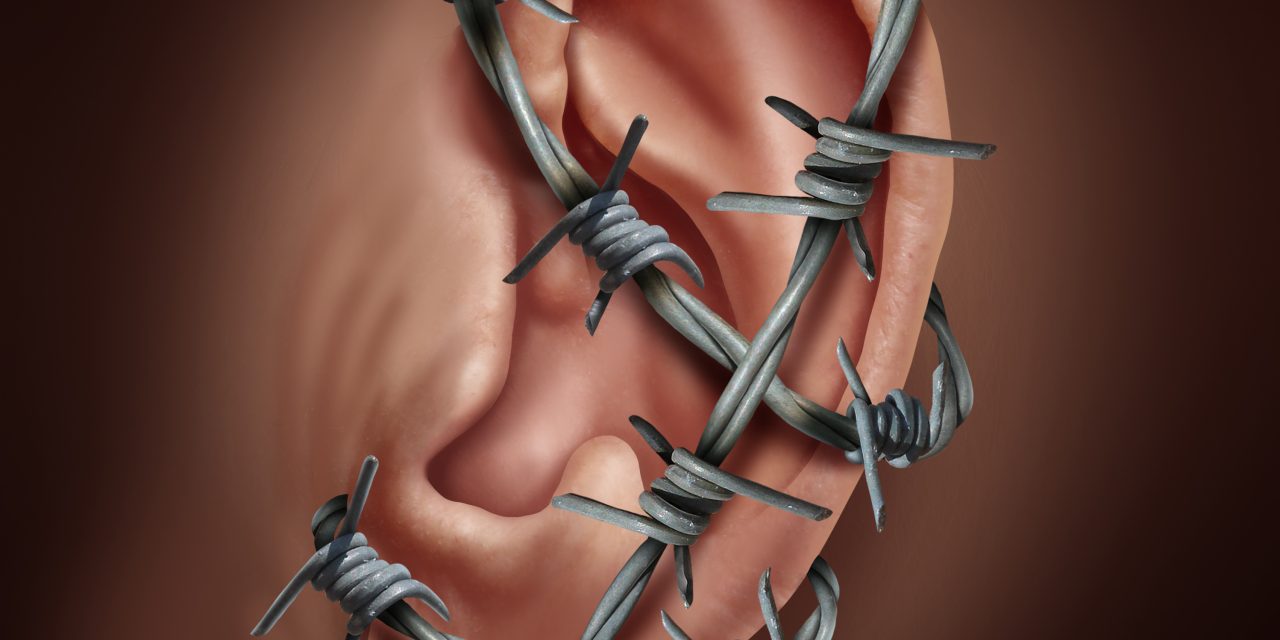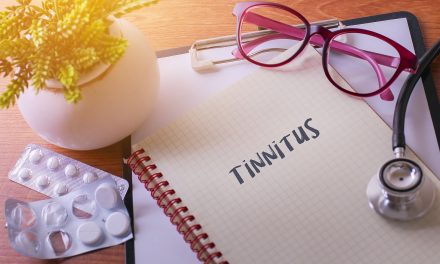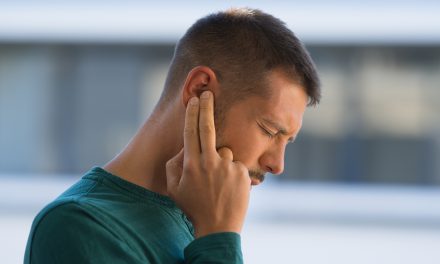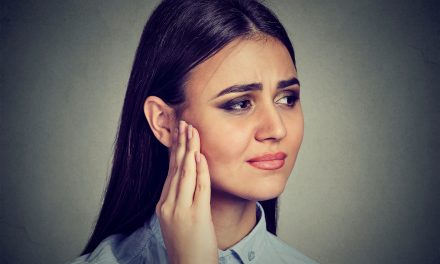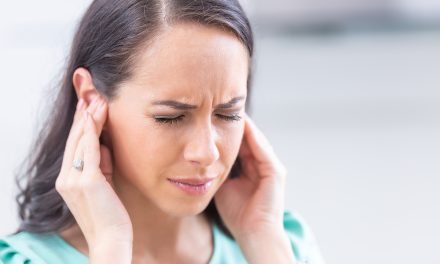Experiencing tinnitus in just one ear can be concerning, and understanding why this occurs is crucial for proper management.
Tinnitus in one ear may stem from various underlying health conditions or injuries, requiring a careful evaluation to determine the exact cause.
This condition can be pulsatile, meaning it aligns with the heartbeat, or non-pulsatile, leading to different diagnostic paths.

Noticing ringing or buzzing solely in one ear isn’t uncommon, yet it highlights the importance of getting a thorough check-up.
Pulsatile tinnitus often indicates vascular problems or other abnormalities. Meanwhile, non-pulsatile tinnitus can result from factors like ear infections, hearing loss, or earwax buildup.
Engaging with qualified professionals for diagnosis and treatment is vital.
Treatment options may include sound therapy, hearing aids, or addressing the root physical cause. Learning about preventative measures and management strategies can help minimize the impact of tinnitus on daily life.
Key Takeaways
- Unilateral tinnitus can point to specific vascular or neurological issues.
- Proper diagnosis and management strategies are essential.
- Treatment varies from sound therapy to addressing health issues.
Understanding Tinnitus
Tinnitus involves hearing noises that aren’t caused by an external source. These phantom sounds can vary in type and may be a sign of underlying issues. The following sections explore the definition, types, and common symptoms of tinnitus.
Definition and Types
Tinnitus is a condition where an individual hears ringing, roaring, or other sounds without an external source. It is often described as a phantom sound experience.
Tinnitus can be subjective, heard only by the person affected, or objective, heard by others and usually linked to the circulatory or muscular systems.
Bilateral tinnitus affects both ears, while unilateral tinnitus involves only one ear. Distinguishing between these types is crucial for diagnosis and treatment, as they may indicate different underlying conditions. Variations might include sounds like hissing or clicking, which can be continuous or intermittent.
Common Symptoms and Sounds
Individuals with tinnitus report experiencing a range of sounds. These include ringing, humming, and whistling, which can vary in volume and pitch. Some may encounter roaring sounds, while others might notice lower frequency hums or sharp clicking.
These phantom noises often interfere with daily activities and may lead to problems with concentration or sleep. Understanding the nature of these sounds helps in identifying the specific type of tinnitus.
People might experience tinnitus differently; some find it constant, while others experience it sporadically, depending on external factors like stress or noise exposure.
Causes of Unilateral Tinnitus
Unilateral tinnitus, or ringing in one ear, can stem from various issues such as earwax buildup, infections, and exposure to loud noises. Each of these causes can affect hearing and result in persistent sounds in just one ear.
Earwax Buildup and Blockages
Earwax, or cerumen, plays a key role in protecting the ear canal by trapping dirt and preventing infections. However, if earwax builds up too much, it can create blockages that lead to tinnitus in one ear. When an ear is blocked, sound transmission is affected, causing a ringing or buzzing sensation.
Sometimes people use cotton swabs to clean their ears, pushing the wax deeper and worsening the blockage. This not only affects hearing but may lead to discomfort and pain as well.
It’s crucial to address earwax buildup safely by consulting healthcare professionals who can remove the wax properly.
Earwax removal techniques, such as irrigation or microsuction, can effectively clear blockages and may alleviate tinnitus symptoms.
Ear Infections and Conditions
Ear infections can also cause unilateral tinnitus. Otitis externa and otitis media are common types where infection in the outer or middle ear leads to inflammation and fluid buildup. This can disrupt normal hearing and cause ringing sounds in the affected ear.
Conditions like otosclerosis and cholesteatoma can further contribute to tinnitus. Otosclerosis involves abnormal bone growth around the stapes bone, impacting sound vibrations. A cholesteatoma is a noncancerous growth that can erode structures in the middle ear, affecting hearing and possibly leading to tinnitus.
In some cases, semicircular canal dehiscence, a rare condition involving thinning or absence of bone overlying the inner ear canals, can also cause unilateral tinnitus. Treatment often involves managing infections with medication or, if needed, surgical intervention.
Impact of Noise and Acoustic Trauma
Exposure to loud noise is a major factor in developing tinnitus. Environments with persistent loud noise, such as concerts or construction sites, can damage the delicate hair cells in the cochlea, leading to acoustic trauma and tinnitus.
When these hair cells are damaged, they may send false signals to the brain, interpreted as sound, resulting in the perception of ringing or buzzing.
Protective measures, such as wearing earplugs or noise-canceling headphones, are essential to prevent hearing damage.
For individuals experiencing tinnitus due to noise exposure, hearing protection and limiting time spent in noisy environments can help manage symptoms.
Associated Health Concerns
Tinnitus in one ear often links with specific health concerns that can impact a person’s overall well-being. These concerns may include hearing issues, neurological or vascular disorders, and systemic illnesses. Each of these areas has distinct implications that might need different approaches in evaluation and management. Understanding these health concerns can provide insight into appropriate treatment options.
Hearing Impairment
Hearing loss in one ear is a common issue linked with tinnitus. This might result from age-related hearing loss, exposure to loud sounds, or other auditory system problems. When tinnitus occurs alongside hearing impairment, it can lead to difficulties in communication and affect a person’s quality of life.
Early intervention and hearing aids might help manage these issues. Medical professionals may recommend regular hearing tests to monitor the condition and adapt solutions accordingly.
Identifying the specific causes of hearing impairment is essential to address the tinnitus effectively. Those who experience sudden or severe hearing loss should seek immediate medical attention to prevent further complications.
Neurological and Vascular Conditions
Tinnitus in one ear can sometimes be linked to neurological conditions like multiple sclerosis or a brain tumor. These conditions may cause symptoms including dizziness, balance issues, or pulsatile tinnitus, where the noise in the ear coincides with one’s heartbeat.
Pulsatile tinnitus is particularly concerning, as it might signal vascular issues like high blood pressure or blood vessel abnormalities. Detailed imaging tests and evaluations by specialists can help determine if these neurological or vascular conditions are present.
Management of the underlying condition might alleviate the tinnitus symptoms, so individuals experiencing unusual or persistent tinnitus should consult healthcare providers promptly.
Systemic Disorders
Systemic disorders affecting the whole body may also relate to unilateral tinnitus. Conditions like high blood pressure and Meniere’s disease are often connected with tinnitus due to their impact on the body’s systems.
High blood pressure may increase the risk of tinnitus by altering blood flow to the ears. Meniere’s disease, an inner ear disorder, often causes episodes of hearing loss, tinnitus, and vertigo. Understanding and managing the underlying systemic disorder can reduce the intensity of tinnitus symptoms.
Regular monitoring and specialist consultations can provide effective strategies for managing these health issues.
Diagnosis and Testing
Tinnitus in one ear requires careful evaluation to determine its cause. This involves audiological assessments and may include imaging and laboratory tests to provide a comprehensive diagnosis.
Audiological Assessment
An audiologist plays a crucial role in assessing tinnitus. The evaluation typically starts with a hearing test to check for hearing loss.
Pure tone audiometry measures the softest tones a person can hear across various frequencies. Speech audiometry, another test, helps understand how well a person recognizes words at different sound levels.
These assessments reveal the extent and type of any hearing loss present. Tympanometry and acoustic reflex measurements might also be used.
Tympanometry tests the condition of the middle ear and mobility of the eardrum. These tests help identify issues such as ear infections or eustachian tube dysfunction that might contribute to tinnitus. Consideration is given to the patient’s medical history and any previous ear conditions.
Imaging and Laboratory Tests
In some cases, imaging tests are recommended to further investigate the cause of tinnitus in one ear.
Magnetic Resonance Imaging (MRI) or Computed Tomography (CT) scans are used to look for structural problems in the ear or brain, such as tumors or bone abnormalities, that might be causing the tinnitus.
Laboratory tests can assist in diagnosing metabolic or vascular conditions linked to tinnitus.
Blood tests might check for underlying issues like anemia, hyperthyroidism, or vitamin deficiencies. These tests offer a more holistic view of the possible causes and help in crafting a suitable treatment plan.
Treatment Strategies
Addressing tinnitus in one ear involves various treatment strategies. These methods range from medical procedures to sound therapies and lifestyle changes. Each strategy aims to manage tinnitus symptoms effectively.
Medical and Surgical Options
Medical interventions can help alleviate tinnitus symptoms. Medication is often prescribed to reduce anxiety and depression that may accompany tinnitus.
While no specific drug cures tinnitus, antibiotics may be used if an infection is present causing ear problems.
For some, earwax removal might relieve symptoms if wax buildup is the cause. Surgical options are less common but may be considered if there’s a clear medical reason, like ossicular chain fixation.
Counseling from healthcare professionals is also essential to address the emotional aspects of living with tinnitus.
Hearing Aids and Sound Therapy
Hearing aids can be beneficial for those experiencing tinnitus with hearing loss. They help amplify external sounds, making internal sounds like tinnitus less noticeable.
Devices designed for masking produce sounds to mask tinnitus, often through a combination of music and white noise.
Sound therapy, available through devices or apps, uses calibrated sounds to help the brain focus away from tinnitus sounds.
White noise machines can create a soothing environment that helps with sleep and concentration. Some hearing aids come with built-in masking features, providing a dual benefit.
Alternative Remedies and Lifestyle
Some find relief through alternative or home remedies and lifestyle changes.
Techniques like acupuncture and meditation may offer stress reduction, potentially easing tinnitus symptoms. Reducing caffeine and alcohol intake might also help some individuals, as these can sometimes worsen tinnitus.
Lifestyle changes such as regular exercise and a healthy diet support overall health and may reduce the impact of tinnitus.
Mindfulness practices or techniques like yoga can manage stress and improve quality of life for those affected by tinnitus. Emphasizing relaxation can improve tolerance to the constant sounds experienced.
Managing Tinnitus Symptoms
Tinnitus management focuses on reducing symptoms and improving quality of life. Effective approaches include behavioral therapies and stress reduction techniques. These methods can help lessen the impact of tinnitus on daily activities.
Behavioral Therapies
Behavioral therapies are essential in managing tinnitus symptoms.
Cognitive Behavioral Therapy (CBT) helps patients reshape the way they perceive tinnitus. By changing negative thought patterns, CBT can reduce the distress associated with tinnitus. This therapy is widely recognized for lowering anxiety and improving coping skills.
Tinnitus Retraining Therapy (TRT) combines sound therapy with counseling. It aims to retrain the brain to ignore tinnitus sounds.
Over time, this process can decrease the perceived loudness of tinnitus. TRT often involves using hearing aids or sound-generating devices to mask tinnitus sounds.
Techniques for Stress Reduction
Stress can worsen tinnitus symptoms, so learning stress reduction techniques is vital.
Relaxation methods, such as deep breathing exercises, can help. Practicing these techniques regularly can lower stress levels and ease tinnitus symptoms.
Mindfulness meditation encourages individuals to focus on the present moment. This practice can decrease stress and improve emotional well-being.
Fatigue, often exacerbated by stress, can also be reduced through regular mindfulness exercises. Consistent practice may lead to better sleep and overall health, indirectly alleviating tinnitus.
Prevention and Awareness
Preventing tinnitus involves protecting hearing from loud noises and being aware of risk factors. Chronic noise exposure and lack of proper ear protection can lead to hearing issues. Understanding these elements empowers individuals to take the necessary steps to minimize risk.
Protecting Your Hearing
Protecting your hearing is crucial to prevent tinnitus.
Exposure to loud noises or chronic noise can damage the sensitive structures in the ear. Using ear protection like ear plugs is a simple yet effective measure.
It is important to limit time spent in noisy environments, like concerts or construction sites. When unavoidable, keep ear protection handy to reduce risk.
Education on the importance of hearing protection can foster better habits.
In workplaces with high noise levels, regulations may require ear protection, emphasizing its importance. The use of muffled headphones is another option when listening to music to ensure volume stays at a safe level. This proactive approach significantly reduces the risk of developing tinnitus from noise exposure.
Understanding Risk Factors
Awareness of risk factors can help in preventing tinnitus. Chronic noise exposure and events with sudden loud noises are significant contributors.
Occupations in noisy industries or hobbies involving loud sounds increase vulnerability to tinnitus.
Lifestyle choices can also have an impact. High intake of alcohol has been linked to hearing issues in some studies.
Maintaining a healthy lifestyle, including regular exercise and balanced movement, supports overall well-being, including ear health.
Knowing personal and environmental factors allows individuals to make informed choices. Recognizing these risks helps in taking preventive actions, like reducing noise exposure or modifying habits, to protect ears from potential harm.
Current Research and Future Directions
Recent developments in tinnitus research focus on innovative treatments and diagnostic methods. These efforts aim to improve patient outcomes and assist in understanding this complex condition.
Two key areas are new treatment options like magnetic and electrical stimulation and better diagnostics for identifying tinnitus.
Innovative Treatment Approaches
One promising area of research is magnetic stimulation. This technique uses magnetic fields to reduce tinnitus symptoms by altering brain activity.
Studies suggest it may help some patients, though more research is needed to confirm its effectiveness.
Another technique is electrical stimulation. It delivers mild electrical currents to the nerves around the ear.
This approach could also help lessen symptoms, especially for those with hearing loss. Some research shows this can provide lasting relief, though results vary among individuals.
There is ongoing interest in treatments specific to objective tinnitus, where the tinnitus noise can be measured by others. Though less common than subjective tinnitus, addressing objective tinnitus might lead to insights that benefit all tinnitus sufferers.
For now, personalized treatment plans are crucial in managing their symptoms.
Advancements in Diagnostic Techniques
Diagnosing tinnitus accurately is crucial for effective treatment. New methods focus on identifying tinnitus causes specific to each patient.
One advancement is using brain imaging techniques, which help detect abnormal brain activity linked to tinnitus, leading to more targeted therapies.
Moreover, advanced audiological tests are improving. These tests analyze a patient’s hearing ability and tinnitus characteristics, helping tailor treatments.
Tests like otoacoustic emissions and auditory evoked responses give a deeper understanding of inner ear function and auditory pathways.
Significant progress is anticipated in making these methods more widely available. Enhanced diagnostics provide a foundation for developing new treatments and improving existing ones, offering hope for those affected by this condition.
Frequently Asked Questions
Tinnitus in one ear can be concerning. Understanding the causes, treatments, and ways to cope can help manage the condition effectively.
What are the common causes of tinnitus in one ear?
Tinnitus in one ear might result from ear infections, earwax buildup, or exposure to loud noises. In some cases, it could be related to age-related hearing loss or conditions affecting only one ear.
Can tinnitus in one ear be a sign of a serious medical condition?
Unilateral tinnitus could indicate a more serious issue like a benign tumor known as an acoustic neuroma. It’s important to consult a healthcare professional for evaluation if persistent or accompanied by other symptoms.
What treatments are available for unilateral tinnitus?
Treatment options include sound therapy, hearing aids, and cognitive behavioral therapy. In some cases, addressing underlying health issues, medications, or surgery might be necessary.
Why does my ear suddenly start ringing?
Sudden ringing in one ear may occur due to a sudden loud noise exposure or changes in ear pressure. Temporary occurrences might not be concerning, but recurring episodes should be evaluated by a doctor.
What steps can I take to alleviate tinnitus in one ear?
Avoiding caffeine and loud noises, managing stress, and ensuring proper ear hygiene can help reduce symptoms.
Consider using white noise machines to mask ringing sounds.
Can certain vitamins or supplements help reduce tinnitus symptoms?
There is limited evidence supporting vitamins or supplements for tinnitus relief. Some people try magnesium or zinc supplements, but it’s vital to discuss with a healthcare provider before starting any new supplement regimen.

